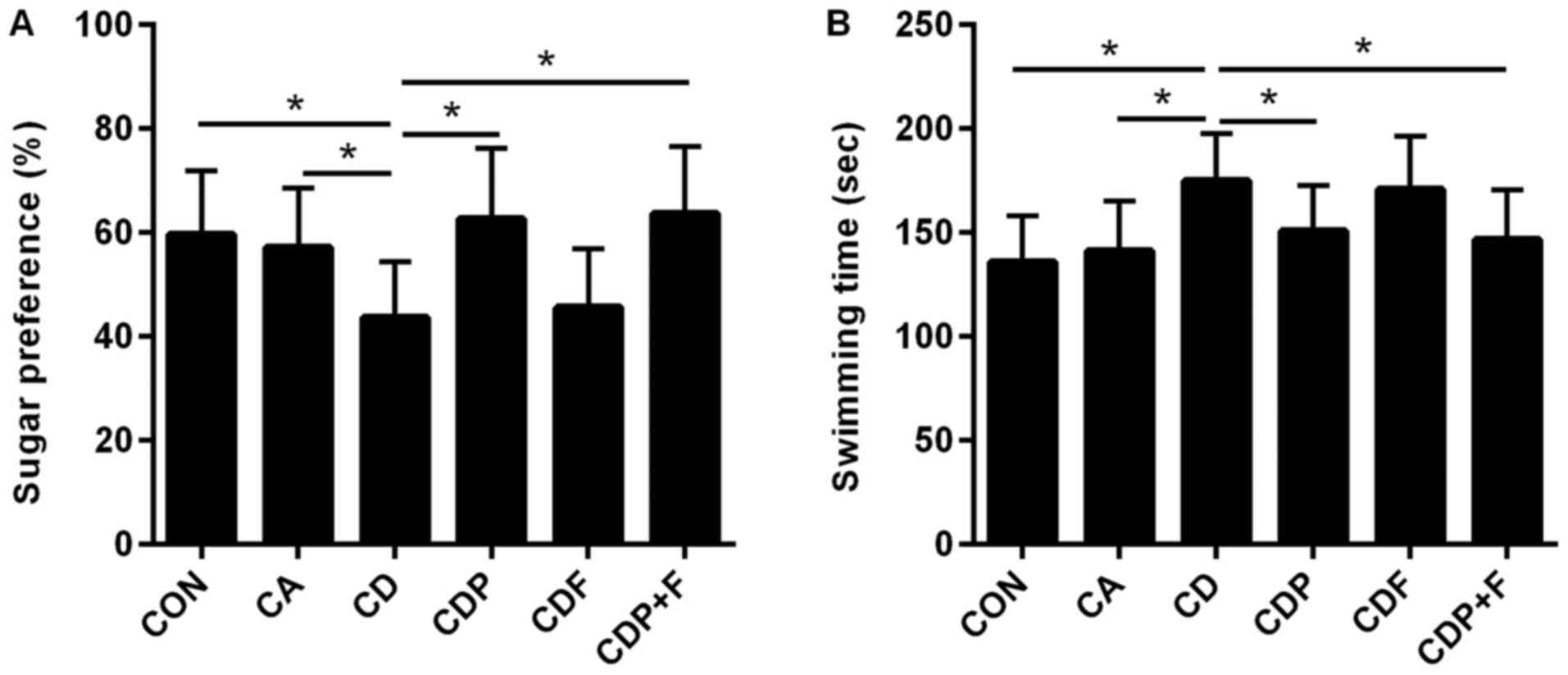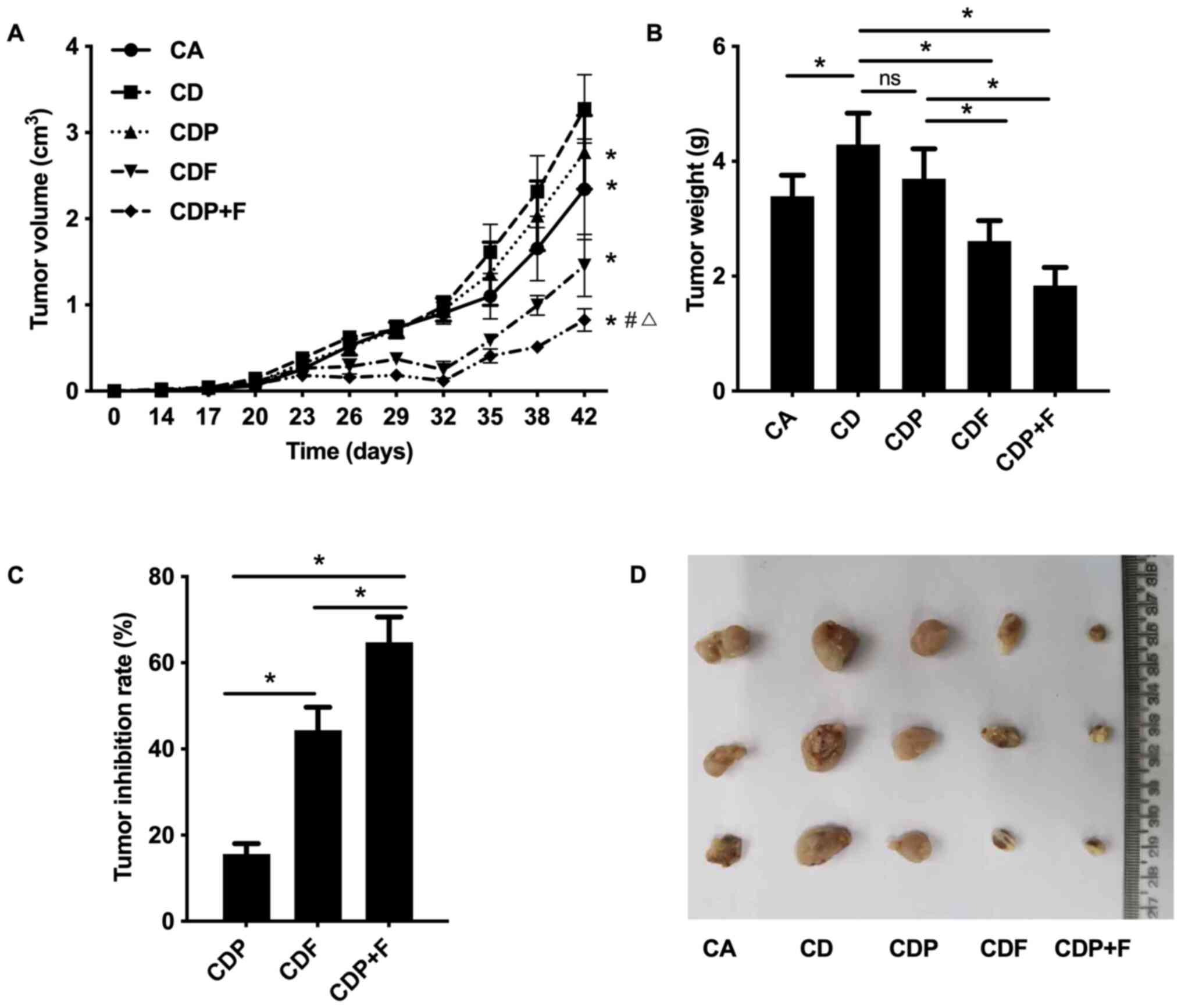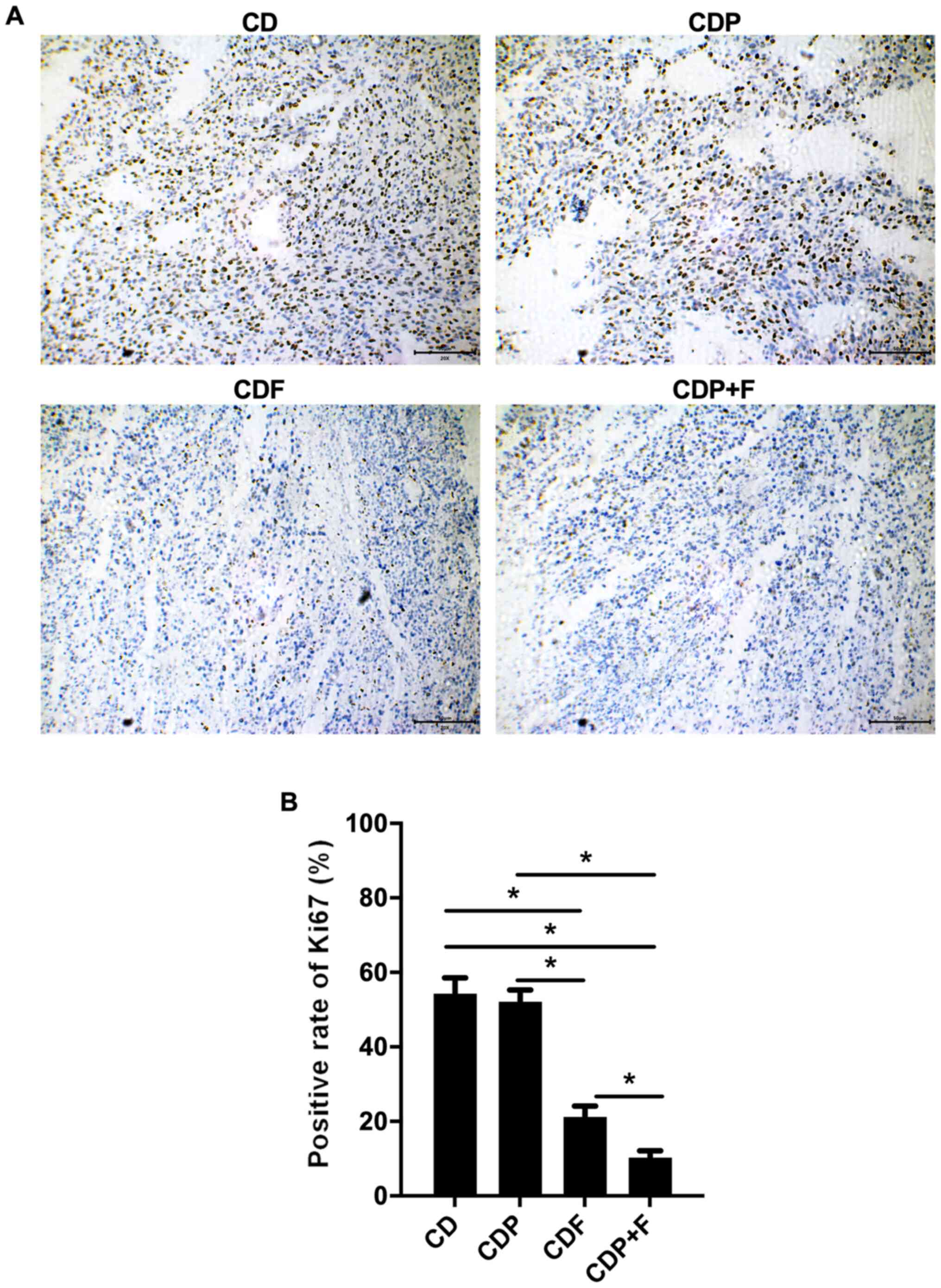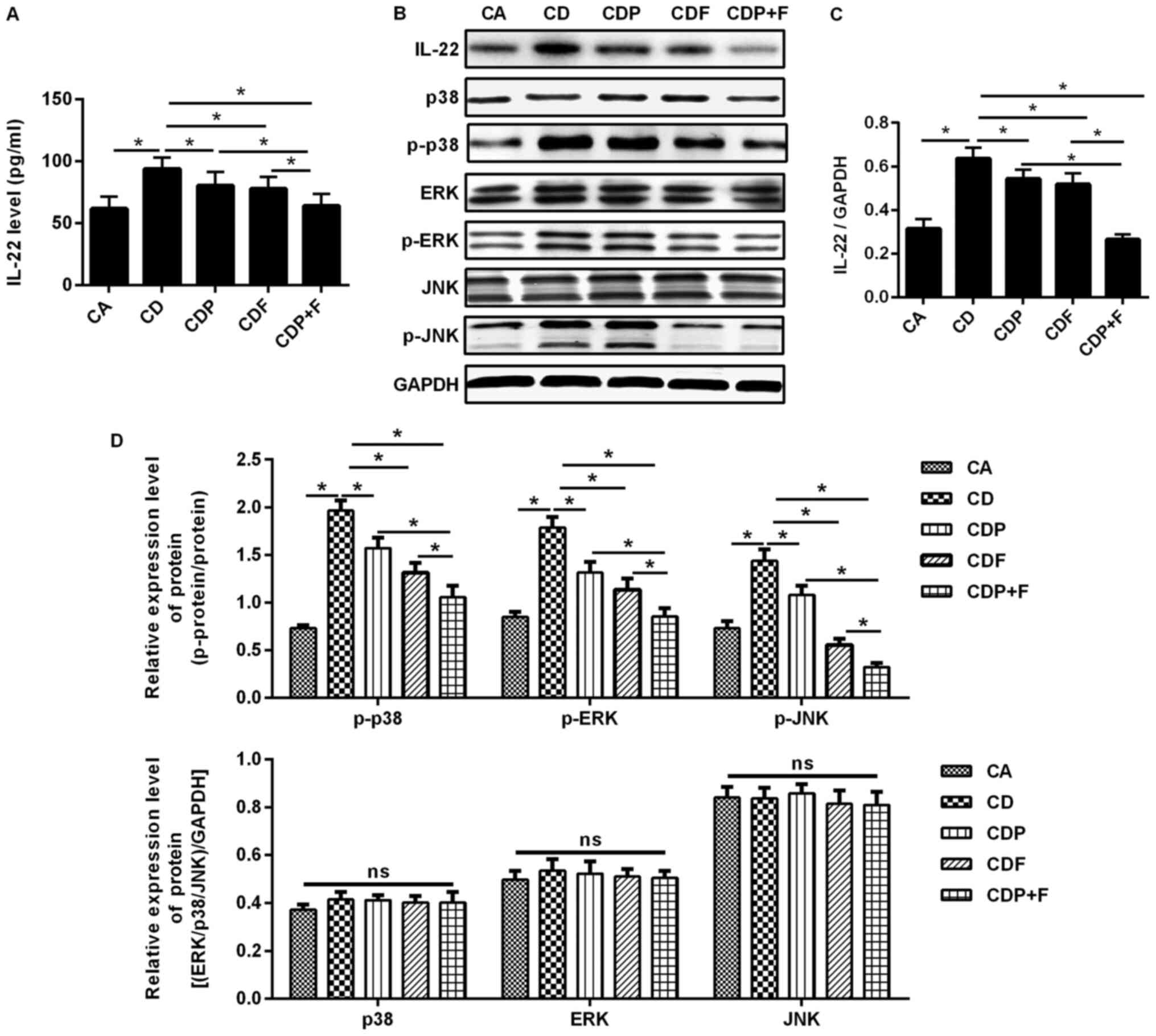|
1
|
Li Q, Liu Y, Su B, Zhao H, Lin Q, Zhu Y,
Zhang L, Weng D, Gong X, Sun X and Xu Y: The CT appearance pattern
of radiation-induced lung injury and tumor recurrence after
stereotactic body radiation therapy in early stage non-small cell
lung cancer. Transl Lung Cancer Res. 9:713–721. 2020.PubMed/NCBI View Article : Google Scholar
|
|
2
|
Feng RM, Zong YN, Cao SM and Xu RH:
Current cancer situation in China: Good or bad news from the 2018
global cancer statistics? Cancer Commun (Lond).
39(22)2019.PubMed/NCBI View Article : Google Scholar
|
|
3
|
Kenzik KM, Kent EE, Martin MY, Bhatia S
and Pisu M: Chronic condition clusters and functional impairment in
older cancer survivors: A population-based study. J Cancer Surviv.
10:1096–1103. 2016.PubMed/NCBI View Article : Google Scholar
|
|
4
|
Miller KD, Sauer AG, Ortiz AP, Fedewa SA,
Pinheiro PS, Tortolero-Luna G, Martinez-Tyson D, Jemal A and Siegel
RL: Cancer statistics for hispanics/latinos, 2018. CA Cancer J
Clin. 68:425–445. 2018.PubMed/NCBI View Article : Google Scholar
|
|
5
|
Chen W, Zheng R, Baade PD, Zhang S, Zeng
H, Bray F, Jemal A, Yu XQ and He J: Cancer statistics in China,
2015. CA Cancer J Clin. 66:115–132. 2016.PubMed/NCBI View Article : Google Scholar
|
|
6
|
Zamora-Ros R, Shivappa N, Steck SE,
Canzian F, Landi S, Alonso MH, Hébert JR and Moreno V: Dietary
inflammatory index and inflammatory gene interactions in relation
to colorectal cancer risk in the bellvitge colorectal cancer
case-control study. Genes Nutr. 10(447)2015.PubMed/NCBI View Article : Google Scholar
|
|
7
|
Raskov H, Pommergaard HC, Burcharth J and
Rosenberg J: Colorectal carcinogenesis-update and perspectives.
World J Gastroenterol. 20:18151–18164. 2014.PubMed/NCBI View Article : Google Scholar
|
|
8
|
Gu MJ, Huang QC, Bao CZ, Li YJ, Li XQ, Ye
D, Ye ZH, Chen K and Wang JB: Attributable causes of colorectal
cancer in China. BMC Cancer. 18(38)2018.PubMed/NCBI View Article : Google Scholar
|
|
9
|
Wang X, Wang B, Zhao J, Liu C, Qu X and Li
Y: MiR-155 is involved in major depression disorder and
antidepressant treatment via targeting SIRT1. Biosci Rep.
38(BSR20181139)2018.PubMed/NCBI View Article : Google Scholar
|
|
10
|
Kosari-Nasab M, Shokouhi G, Ghorbanihaghjo
A, Abbasi MM and Salari AA: Hesperidin attenuates
depression-related symptoms in mice with mild traumatic brain
injury. Life Sci. 213:198–205. 2018.PubMed/NCBI View Article : Google Scholar
|
|
11
|
Rooney AG, McNamara S, Mackinnon M, Fraser
M, Rampling R, Carson A and Grant R: The frequency, longitudinal
course, clinical associations, and causes of emotional distress
during primary treatment of cerebral glioma. Neuro oncol.
15:635–643. 2013.PubMed/NCBI View Article : Google Scholar
|
|
12
|
Hong JS and Tian J: Prevalence of anxiety
and depression and their risk factors in Chinese cancer patients.
Support Care Cancer. 22:453–459. 2014.PubMed/NCBI View Article : Google Scholar
|
|
13
|
Van Gorp H and Lamkanfi M: The emerging
roles of inflammasome-dependent cytokines in cancer development.
EMBO Rep. 20(e47575)2019.PubMed/NCBI View Article : Google Scholar
|
|
14
|
Nocera NF, Lee MC, De La Cruz LM,
Rosemblit C and Czerniecki BJ: Restoring lost anti-HER-2 Th1
immunity in breast cancer: A crucial role for Th1 cytokines in
therapy and prevention. Front Pharmacol. 7(356)2016.PubMed/NCBI View Article : Google Scholar
|
|
15
|
Sconocchia G, Eppenberger S, Spagnoli GC,
Tornillo L, Droeser R, Caratelli S, Ferrelli F, Coppola A, Arriga
R, Lauro D, et al: NK cells and T cells cooperate during the
clinical course of colorectal cancer. Oncoimmunology.
3(e952197)2014.PubMed/NCBI View Article : Google Scholar
|
|
16
|
Kryczek I, Lin Y, Nagarsheth N, Peng D,
Zhao L, Zhao E, Vatan L, Szeliga W, Dou Y, Owens S, et al:
IL-22+ CD4+ T cells promote colorectal cancer
stemness via STAT3 transcription factor activation and induction of
the methyltransferase DOT1L. Immunity. 40:772–784. 2014.PubMed/NCBI View Article : Google Scholar
|
|
17
|
Huang YH, Cao YF, Jiang ZY, Zhang S and
Gao F: Th22 cell accumulation is associated with colorectal cancer
development. World J Gastroenterol. 21:4216–4224. 2015.PubMed/NCBI View Article : Google Scholar
|
|
18
|
Trifari S, Kaplan CD, Tran EH, Crellin NK
and Spits H: Identification of a human helper T cell population
that has abundant production of interleukin 22 and is distinct from
TH-17, TH 1 and TH 2 cells. Nat Immunol. 10:864–871.
2009.PubMed/NCBI View
Article : Google Scholar
|
|
19
|
Lejeune D, Dumoutier L, Constantinescu S,
Kruijer W, Schuringa JJ and Renauld JC: Interleukin-22 (IL-22)
activates the JAK/STAT, ERK, JNK, and p38 MAP kinase pathways in a
rat hepatoma cell line pathways that are shared with and distinct
from IL-10. J Biol Chem. 277:33676–33682. 2002.PubMed/NCBI View Article : Google Scholar
|
|
20
|
Liu Y, Pan W, Yang S, Wu X, Wu J, Ma J,
Yuan Z and Meng S: Interleukin-22 protects rat PC12
pheochromocytoma cells from serum deprivation-induced cell death.
Mol Cell Biochem. 371:137–146. 2012.PubMed/NCBI View Article : Google Scholar
|
|
21
|
Yu H, Fan C, Yang L, Yu S, Song Q, Wang P
and Mao X: Ginsenoside Rg1 prevents chronic stress-induced
depression-like behaviors and neuronal structural plasticity in
rats. Cell Physiol Biochem. 48:2470–2482. 2018.PubMed/NCBI View Article : Google Scholar
|
|
22
|
Andrus BM, Blizinsky K, Vedell PT, Dennis
K, Shukla PK, Schaffer DJ, Radulovic J, Churchill GA and Redei EE:
Gene expression patterns in the hippocampus and amygdala of
endogenous depression and chronic stress models. Mol Psychiatry.
17:49–61. 2012.PubMed/NCBI View Article : Google Scholar
|
|
23
|
Porsolt RD, Le Pichon M and Jalfre M:
Depression: A new animal model sensitive to antidepressant
treatments. Nature. 266:730–732. 1977.PubMed/NCBI View
Article : Google Scholar
|
|
24
|
Osanloo N, Najafi-Abedi A, Jafari F, Javid
F, Pirpiran M, Memar Jafari MR, Khosravi SAM, Behzadi MR, Ranjbaran
M and Sahraei H: Papaver rhoeas L. hydroalcoholic extract
exacerbates forced swimming test-induced depression in mice. Basic
Clin Neurosci. 7:195–202. 2016.PubMed/NCBI View Article : Google Scholar
|
|
25
|
Smith K: Mental health: A world of
depression. Nature. 515(181)2014.PubMed/NCBI View
Article : Google Scholar
|
|
26
|
Mugge L, Mansour TR, Crippen M, Alam Y and
Schroeder J: Depression and glioblastoma, complicated concomitant
diseases: A systemic review of published literature. Neurosurg Rev.
43:497–511. 2020.PubMed/NCBI View Article : Google Scholar
|
|
27
|
Dowlati Y, Herrmann N, Swardfager W, Liu
H, Sham L, Reim EK and Lanctôt KL: A meta-analysis of cytokines in
major depression. Biol Psychiatry. 67:446–457. 2010.PubMed/NCBI View Article : Google Scholar
|
|
28
|
Thaker PH, Han LY, Kamat AA, Arevalo JM,
Takahashi R, Lu C, Jennings NB, Armaiz-Pena G, Bankson JA, Ravoori
M, et al: Chronic stress promotes tumor growth and angiogenesis in
a mouse model of ovarian carcinoma. Nat Med. 12:939–944.
2006.PubMed/NCBI View
Article : Google Scholar
|
|
29
|
Jemal A, Bray F, Center MM, Ferlay J, Ward
E and Forman D: Global cancer statistics. CA Cancer J Clin.
61:69–90. 2011.PubMed/NCBI View Article : Google Scholar
|
|
30
|
Quach C, Sanoff HK, Williams GR, Lyons JC
and Reeve BB: Impact of colorectal cancer diagnosis and treatment
on health-related quality of life among older Americans: A
population-based, case-control study. Cancer. 121:943–950.
2015.PubMed/NCBI View Article : Google Scholar
|
|
31
|
Shaheen Al Ahwal M, Al Zaben F, Khalifa
DA, Sehlo MG, Ahmad RG and Koenig HG: Depression in patients with
colorectal cancer in Saudi Arabia. Psychooncology. 24:1043–1050.
2015.PubMed/NCBI View
Article : Google Scholar
|
|
32
|
White AJ, Reeve BB, Chen RC, Stover AM and
Irwin DE: Coexistence of urinary incontinence and major depressive
disorder with health-related quality of life in older Americans
with and without cancer. J Cancer Surviv. 8:497–507.
2014.PubMed/NCBI View Article : Google Scholar
|
|
33
|
Santos JC and Pyter LM: Neuroimmunology of
behavioral comorbidities associated with cancer and cancer
treatments. Front Immunol. 9(1195)2018.PubMed/NCBI View Article : Google Scholar
|
|
34
|
Ehlert U, Gaab J and Heinrichs M:
Psychoneuroendocrinological contributions to the etiology of
depression, posttraumatic stress disorder, and stress-related
bodily disorders: The role of the hypothalamus-pituitary-adrenal
axis. Biol Psychol. 57:141–152. 2001.PubMed/NCBI View Article : Google Scholar
|
|
35
|
Wang J, Chen Y, Dai C, Shang Y and Xie J:
Ginsenoside Rh2 alleviates tumor-associated depression in a mouse
model of colorectal carcinoma. Am J Transl Res. 8:2189–2195.
2016.PubMed/NCBI
|
|
36
|
Hawkins NA, Soman A, Buchanan Lunsford N,
Leadbetter S and Rodriguez JL: Use of medications for treating
anxiety and depression in cancer survivors in the United States. J
Clin Oncol. 35:78–85. 2017.PubMed/NCBI View Article : Google Scholar
|
|
37
|
Kulkarni SK and Dhir A: Current
investigational drugs for major depression. Expert Opin Investig
Drugs. 18:767–788. 2009.PubMed/NCBI View Article : Google Scholar
|
|
38
|
Dumoutier L, Louahed J and Renauld JC:
Cloning and characterization of IL-10-related T cell-derived
inducible factor (IL-TIF), a novel cytokine structurally related to
IL-10 and inducible by IL-9. J Immunol. 164:1814–1819.
2000.PubMed/NCBI View Article : Google Scholar
|
|
39
|
Logsdon NJ, Jones BC, Josephson K, Cook J
and Walter MR: Comparison of interleukin-22 and interleukin-10
soluble receptor complexes. J Interferon Cytokine Res.
22:1099–1112. 2002.PubMed/NCBI View Article : Google Scholar
|
|
40
|
Rutz S, Eidenschenk C and Ouyang W: IL-22,
not simply a Th17 cytokine. Immunol Rev. 252:116–132.
2013.PubMed/NCBI View Article : Google Scholar
|
|
41
|
Brand S, Beigel F, Olszak T, Zitzmann K,
Eichhorst ST, Otte JM, Diepolder H, Marquardt A, Jagla W, Popp A,
et al: IL-22 is increased in active Crohn's disease and promotes
proinflammatory gene expression and intestinal epithelial cell
migration. Am J Physiol Gastrointest Liver Physiol. 290:G827–G838.
2006.PubMed/NCBI View Article : Google Scholar
|
|
42
|
Ikeuchi H, Kuroiwa T, Hiramatsu N, Kaneko
Y, Hiromura K, Ueki K and Nojima Y: Expression of interleukin-22 in
rheumatoid arthritis: Potential role as a proinflammatory cytokine.
Arthritis Rheum. 52:1037–1046. 2005.PubMed/NCBI View Article : Google Scholar
|
|
43
|
Wolk K, Kunz S, Witte E, Friedrich M,
Asadullah K and Sabat R: IL-22 increases the innate immunity of
tissues. Immunity. 21:241–254. 2004.PubMed/NCBI View Article : Google Scholar
|
|
44
|
Gurney AL: IL-22, a Th1 cytokine that
targets the pancreas and select other peripheral tissues. Int
Immunopharmacol. 4:669–677. 2004.PubMed/NCBI View Article : Google Scholar
|
|
45
|
Aujla SJ and Kolls JK: IL-22: A critical
mediator in mucosal host defense. J Mol Med (Berl). 87:451–454.
2009.PubMed/NCBI View Article : Google Scholar
|
|
46
|
Nagalakshmi ML, Rascle A, Zurawski S,
Menon S and de Waal Malefyt R: Interleukin-22 activates STAT3 and
induces IL-10 by colon epithelial cells. Int Immunopharmacol.
4:679–691. 2004.PubMed/NCBI View Article : Google Scholar
|
|
47
|
Nardinocchi L, Sonego G, Passarelli F,
Avitabile S, Scarponi C, Failla CM, Simoni S, Albanesi C and Cavani
A: Interleukin-17 and interleukin-22 promote tumor progression in
human nonmelanoma skin cancer. Eur J Immunol. 45:922–931.
2015.PubMed/NCBI View Article : Google Scholar
|
|
48
|
Park O, Wang H, Weng H, Feigenbaum L, Li
H, Yin S, Ki SH, Yoo SH, Dooley S, Wang FS, et al: In vivo
consequences of liver-specific interleukin-22 expression in mice:
Implications for human liver disease progression. Hepatology.
54:252–261. 2011.PubMed/NCBI View Article : Google Scholar
|
|
49
|
Herzallah MM, Moustafa AA, Natsheh JY,
Danoun OA, Simon JR, Tayem TI, Sehwail MA, Amleh I, Bannoura I,
Petrides G, et al: Depression impairs learning, whereas the
selective serotonin reuptake inhibitor, paroxetine, impairs
generalization in patients with major depressive disorder. J Affect
Disord. 151:484–492. 2013.PubMed/NCBI View Article : Google Scholar
|
|
50
|
Chang L and Karin M: Mammalian MAP kinase
signalling cascades. Nature. 410:37–40. 2001.PubMed/NCBI View Article : Google Scholar
|
|
51
|
Devendrakumar KT, Li X and Zhang Y: MAP
kinase signalling: Interplays between plant PAMP-and
effector-triggered immunity. Cell Mol Life Sci. 75:2981–2989.
2018.PubMed/NCBI View Article : Google Scholar
|
|
52
|
Zhang X, Liu W, Li Y, Li G and Xu JR:
Expression of HopAI interferes with MAP kinase signalling in
magnaporthe oryzae. Environ Microbiol. 19:4190–4204.
2017.PubMed/NCBI View Article : Google Scholar
|
|
53
|
Guo C, Hou J, Ao S, Deng X and Lyu G:
HOXC10 up-regulation promotes gastric cancer cell proliferation and
metastasis through MAPK pathway. Chin J Cancer Res. 29:572–580.
2017.PubMed/NCBI View Article : Google Scholar
|
|
54
|
Zhang G, Cheng Y, Zhang Q, Li X, Zhou J,
Wang J and Wei L: ATX-LPA axis facilitates estrogen-induced
endometrial cancer cell proliferation via MAPK/ERK signaling
pathway. Mol Med Rep. 17:4245–4252. 2018.PubMed/NCBI View Article : Google Scholar
|
|
55
|
Park SS, Park SK, Lim JH, Choi YH, Kim WJ
and Moon SK: Esculetin inhibits cell proliferation through the
Ras/ERK1/2 pathway in human colon cancer cells. Oncol Rep.
25:223–230. 2011.PubMed/NCBI
|
|
56
|
Meloche S and Pouysségur J: The ERK1/2
mitogen-activated protein kinase pathway as a master regulator of
the G1-to S-phase transition. Oncogene. 26:3227–3239.
2007.PubMed/NCBI View Article : Google Scholar
|
|
57
|
Kim K, Kim G, Kim JY, Yun HJ, Lim SC and
Choi HS: Interleukin-22 promotes epithelial cell transformation and
breast tumorigenesis via MAP3K8 activation. Carcinogenesis.
35:1352–1361. 2014.PubMed/NCBI View Article : Google Scholar
|
|
58
|
Tan AHM and Lam KP: Pharmacologic
inhibition of MEK-ERK signaling enhances Th17 differentiation. J
Immunol. 184:1849–1857. 2010.PubMed/NCBI View Article : Google Scholar
|



















